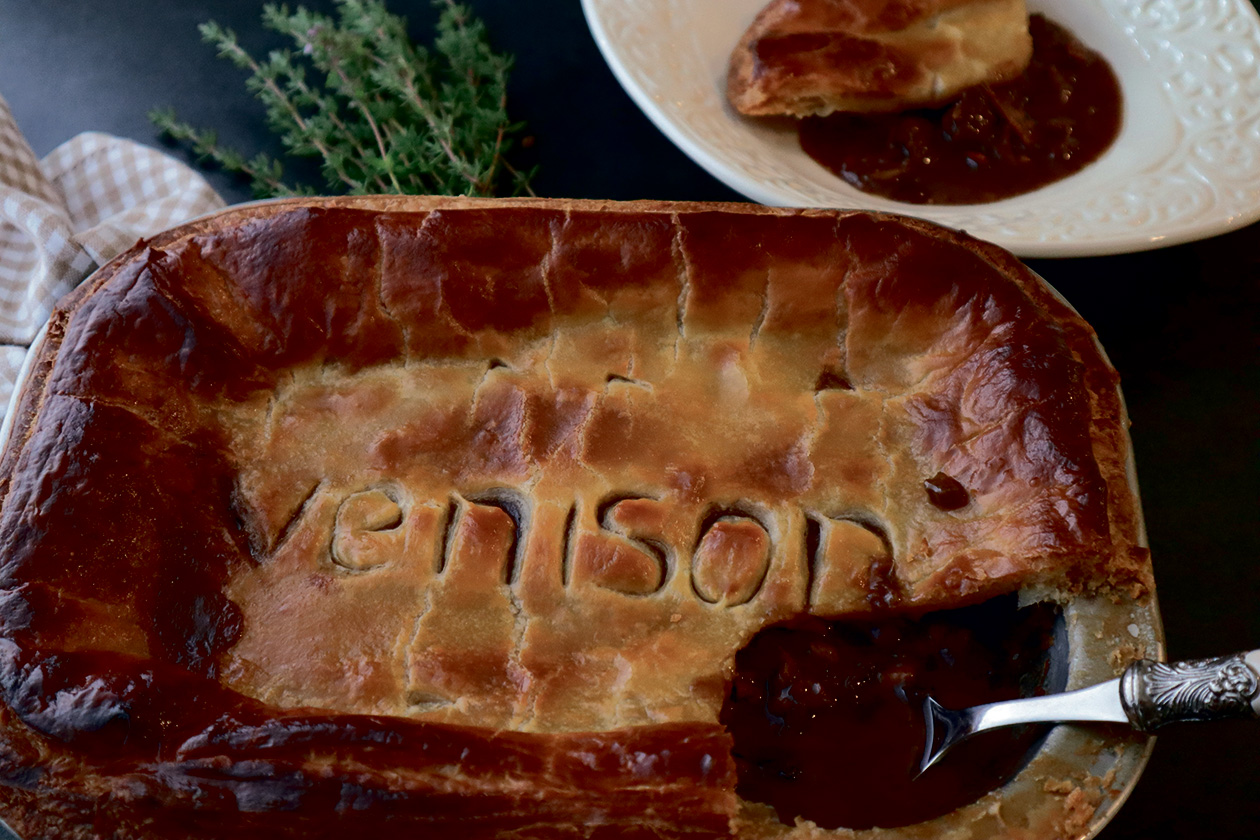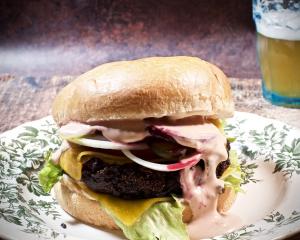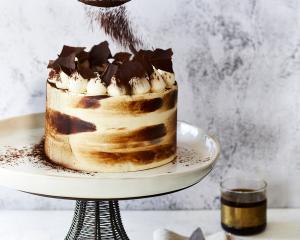
Advice to “Always blow on the pie” has become a classic Kiwi in-joke.
That is because pies are a Kiwi staple, whether it’s grabbing one on the go or sitting down to a family pie at the dinner table. At the forefront of this movement have been family bakeries like Hillyer’s Bakery in Lincoln.

The story of this popular bakery is being told by their daughter Wendy Morgan, who grew up in the bakery, in a new cookbook Who Made All the Pies: The ultimate collection of pastry treats for every Kiwi household.
“Hillyer’s Bakery was considered the best in Canterbury at the time, which I know is a big call for me to say, but that’s what people used to tell us, and we believed them.”
Her mother was credited for taking the flavour spectrum of pies to another level.
Not content to make mince, steak and cheese and bacon and egg pies, she started making chicken and mushroom, corn and apricot and adding mushrooms, tomatoes and cheese to steak pies.
“Rumour has it she was the first to make steak and cheese pies.”
When her parents retired, her brother Grant took over the bakery and rebranded it and Morgan has always wanted to write a book about her parents endeavours and share some of the family’s favourite pie recipes.
While Morgan includes a chapter on making different kinds of pastry for pies, she does say that ready-made pastry is a good convenient product and if it means someone gets to make a pie from this book that they would otherwise be too time poor to do then “I say go for it”.
Flaky pastry 1
225g butter, room temperature firm
300g high-grade white flour
Pinch salt
185ml cold water
Method
Rub 30g of butter into the flour and salt by hand, or use an electric mixer. Add the cold water and bring together to form a soft dough. Wrap the dough in cling film or baking paper and rest in the fridge for 10 minutes, then roll out to a 40 x 20cm rectangle.
Break the remaining butter into small pieces and dot it over two-thirds of the rectangle. Fold the plain third of the pastry over to the centre. Then fold the buttered third over to make a square. Give the pastry a quarter turn on the bench. Gently roll the pastry out. Start by pushing down with the rolling pin. Roll out to 50 x 16cm then repeat the same fold sequence as before.
Wrap the pastry in cling film or baking paper and rest in the fridge for 20 minutes. Repeat the rolling out and folding sequence five more times, resting the pastry in the fridge each time.
Flaky pastry 2
300g butter, room temperature firm
400g high-grade white flour
½ tsp salt
200ml cold water
Method
Rub 50g of butter into the flour and salt by hand, or use an electric mixer. Add the cold water and bring together to form a soft dough.
Wrap the dough in cling film or baking paper and rest in the fridge for 10 minutes, then roll out to a 40 x 20cm rectangle. Break the remaining butter into small pieces and dot it over two-thirds of the rectangle.
Fold the plain third of the pastry over to the centre. Then fold the buttered third over to make a square. Give the pastry a quarter turn on the bench. Gently roll the pastry out. Start by pushing down with the rolling pin. Roll out to 50 x 16cm then repeat the same fold sequence as before.
Wrap the pastry in cling film or baking paper and rest in the fridge for 20 minutes. Repeat the rolling out and folding sequence five more times, resting the pastry in the fridge each time.

Beef, caramelised onion and blue cheese pies
As with the other beef pie recipes, I use shin beef for this, but you can use whichever stewing cut you prefer. I like to use a creamy style of blue cheese; I find they have a nice melting texture. Blue cheese can be a little salty when cooked, so bear this in mind when you are seasoning your meat - don’t overdo it.
MAKES 6 PIES
USING 11cm ROUND TINS
6 medium onions
50g butter
1 tsp salt
1 kg stewing beef (such as shin), cut into 2.5cm cubes
½ cup plain white flour,
plus extra 1 Tbsp
Salt and freshly ground black pepper
Olive oil
1 litre beef stock
¼ cup Worcestershire sauce
6 stalks fresh thyme
1 quantity flaky pastry 2 (page 5)
180g blue cheese, divided into
6 x 30g portions
1 egg
Method
Peel the onions and cut them in half, lengthways, then slice into semi-circles. Place the butter into a frypan, then add the onions and salt. Caramelise over a medium-low heat, stirring often, until the onions melt down and turn golden brown. This will take about 45 minutes - turn the heat down if they are browning too fast. They can be cooking while you prepare your beef. Leave to cool.
Dust the cubes of beef in ½ cup flour seasoned with salt and pepper, making sure the cubes are well coated.
Heat a drizzle of olive oil in a frypan over a medium-high heat and brown the beef cubes in batches. Make sure you have a space between each piece so the meat does not sweat. Turn the beef cubes to colour all sides; this will take about 5 minutes per batch. Once browned, transfer the beef to a casserole dish. Use another drizzle of olive oil for each new batch if needed.
Preheat the oven to 180degC fan bake.
Once all the beef is browned and transferred to the casserole dish, make sure you have 1 tablespoon oil left in the pan, then add 1 tablespoon flour. Heat, and cook while stirring until golden brown, about 30 seconds. Pour the stock into the pan and bring to the boil, whisking if necessary to smooth out any lumps. Pour the stock over the beef, add the Worcestershire sauce, thyme and season. Cover the casserole dish with a lid and cook in the oven for 2 hours until the meat is tender to the point it can be cut with a spoon. Check the seasoning after the first hour and add a little more salt and pepper if needed. The sauce should be reduced to a slightly thick consistency and be nice and shiny. Leave to cool completely and remove the thyme stalks.
Turn up the oven to 210degC fan bake.
Spread the pie tins out on the bench next to each other but not touching.
Roll out just over half the block of pastry on a lightly floured bench to about 3mm thick. It should be big enough to fit over the six pie tins with enough over the edges to line the sides of the tins when pushed down. Roll the pastry towards you on to your rolling pin and then roll it away from you to release it over the pie tins. Press the pastry into the base of the tins. You can make a small ball with pastry from the edges to assist with this. Do this in two stages, pressing the pastry halfway into the pie tins first and then going over them again to press right into the bottoms. This allows the pastry to relax so it won’t be inclined to shrink when cooking.
Divide the cooked beef between the six pastry cases. Then divide the caramelised onion into the tins, on top of the beef. Finally, crumble over the blue cheese with your fingers.
Brush or spray the edges of the pies with water.
Roll the remaining pastry out to fit over the top of the pies and lay it over by first rolling the pastry towards you on to the rolling pin and then backwards over the pies. Press down around the edges of the pies, then use a small sharp knife to cut around the edges of the pie tins, being careful to hold the knife upright, rather than leaning into the pies.
Whisk the egg and egg-wash the top of the pies. Make a few airholes with the tip of your knife.
Place the pies on a baking tray and bake for 25 minutes.

Venison, bacon and cranberry pie
This is a big family-style pie, using wild or farmed venison. The pastry is enough for two of these pies: I suggest cutting the block in half and freezing one half for another day.
Venison is lean, so the bacon in this recipe adds some fat for flavour and viscosity.
MAKES 1 IN AN
18 x 26cm PIE DISH
200g streaky bacon, cut into 2cm strips
½ cup plain white flour
Salt
Freshly ground black pepper
½ tsp ground allspice
750g venison, diced in 3cm cubes
3-4 Tbsp olive oil
1 onion, peeled and diced
1 large stalk celery, diced
1 bay leaf
10 stalks fresh thyme
1 cup red wine
1 cup dried cranberries
1 litre beef stock
1 quantity flaky pastry 1 (page 4)
1 egg
Method
Preheat the oven to 170degC fan bake.
Gently fry the bacon in a frypan on a medium heat. Remove from the pan with a slotted spoon, leaving the fat behind, and put it into a 3-litre capacity casserole dish.
Mix the flour with ½ tsp salt, some pepper and the allspice, and toss the venison pieces in it. Turn the pan up to medium-high, shake the excess flour off the venison and brown in the bacon fat. If there is not enough bacon fat you can add some olive oil to the pan. Depending on the size of your pan, you will need to do this in two or three batches, as you need to leave some space between the venison pieces so it doesn’t stew. When the venison is browned on all sides, transfer to the casserole dish using a slotted spoon.
Using the same pan, and some more olive oil if needed, add the onion, celery, bay leaf and thyme with a sprinkle of salt and sauté over medium heat until the onion is slightly caramelised and starting to soften. Pour in the red wine and cook until the liquid has reduced by half. Add all of this to the casserole dish, along with the cranberries, beef stock, salt and pepper. Place the lid on the casserole dish and cook in the oven for 3 hours, or until the venison is tender. Check a few times for seasoning and make sure the sauce is not reducing too fast. Add a little more stock or some water if required.
Leave to cool completely, preferably overnight.
Preheat the oven to 210degC fan bake.
Place the filling into the pie dish. On a lightly floured bench, roll the pastry out to 4mm thick, using the pie dish as a measure. Lay the pastry on top of the filling by rolling it backwards on to your rolling pin and then forwards over the dish. Gently press the pastry on to the edges of the dish. Whisk egg and egg-wash the top of the pie. Cut some airholes with the tip of a sharp knife.
Place the pie on a baking sheet and bake for 40-50 minutes until the filling is bubbling. If the pastry starts browning too quickly, cover loosely with aluminium foil.

Apricot and rosemary pies
These pies are a version of a pie my mother used to make at our bakery when I was a child. They were largely forgotten until I was reminiscing with my brother and they cropped up.
The secret to these flavour bombs is the good-quality dried apricots. I use apricots from either Central Otago or Australia. The Turkish ones just don’t have the necessary intense flavour.
I’ve added my own twist with rosemary. Mum didn’t put rosemary into her pies. That would have been a bit weird in her mind.
Serve the pies warm with a scoop of vanilla ice cream. You can make them ahead of time and reheat them, although it is hard to resist straight from the oven.
You do have to start these pies at least the day before; the apricot mixture will keep for four or five days in the fridge.
MAKES 12
PIES IN A MUFFIN TIN
250g dried apricots
½ cup white sugar
2 cups boiling water
3 tsp lemon juice
1 tsp chopped fresh rosemary
1 quantity flaky pastry 1 (page 4)
1 egg
Demerara sugar
To serve
Vanilla ice cream
Method
Put the apricots and sugar into a glass or stainless-steel bowl and pour the boiling water over them. Cover with cling film and leave overnight.
The next day, preheat the oven to 170degC fan bake.
Pour the apricots and juice into a ceramic dish, cover with aluminium foil and bake for 1.5 hours, stirring every half hour. Add the lemon juice for the last half hour and the chopped fresh rosemary for the last 10 minutes. Leave the mixture to cool.
Turn the oven up to 210degC fan bake.
Cut two-thirds from the pastry block. On a lightly floured bench, roll to 3mm thick and, using a 10cm round cutter, cut 12 rounds. Place these bases into the muffin tin. Fill each base with 1 tablespoon of apricot mixture: there should be just enough mix for the 12 pies. Roll the last third of pastry out until large enough to cut twelve 6cm rounds. Place these on top of the pies.
Whisk the egg and egg-wash the top of the pies. Cut some airholes in the pastry with the tip of a sharp knife. Sprinkle the top of the pies with demerara sugar.
Bake for 12-15 minutes until dark golden and puffy. Cool on a rack if not eating them straight away. Serve with vanilla ice cream.













